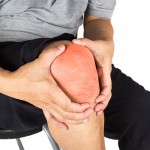By: Bel Marra Health | Blood Disorders, Joint Health | Tuesday, November 17, 2015 - 16:00 PM
For some time now, doctors who treat people with hemophilia have noticed
that adults with severe cases of the blood clotting disorder experience joint
diseases. They say this is happening due to repeated bleeding in the joints.
What is particularly upsetting is that in some cases the damage that can take
place after a hemophilia joint bleed can be permanent.
Hemophilia and joint damage
Joint bleeds are most common in the shoulders, fingers, wrists, knees, hips
and toes. When the joint fills up with blood you can experience pain, but there
are other signs you could be experiencing a hemophilia joint bleed. It is best
to address the early signs before they progress to a more severe level.
Here are some examples of early signs:
How does joint damage affect a hemophiliac?
Hemophilia joint damage can be a challenge to deal with. It can certainly have an impact on daily activity. The joint damage can cause bleeding in the same joint over and over again, as well as loss of motion in the joint. In some cases, people still maintain range of motion yet experience a loss of strength in the muscles around the joint. Of course, pain is common when using the joint, but it can also be present when the joint is in a resting position.
When a hemophiliac has joint damage in the knee or ankle they can also have difficulty running, dancing or riding a bike. In severe cases, walking without pain is impossible. For some people, doing tasks like carrying heavy loads, kneeling, getting up and down stairs, or getting in and out of the car can be much harder.
For those who suffer joint damage in their elbows, something as simple as getting dressed, using a fork and knife to eat, or writing can be painful exercises.
Hemophilia, a disorder that makes it difficult for the body to control blood clotting, can increase the risk of joint diseases and bleeding into joints.
For some time now, doctors who treat people with hemophilia have noticed
that adults with severe cases of the blood clotting disorder experience joint
diseases. They say this is happening due to repeated bleeding in the joints.
What is particularly upsetting is that in some cases the damage that can take
place after a hemophilia joint bleed can be permanent.
About 20,000 American men have hemophilia. While women can get the disorder,
it is rare in the female population. Right now there is no cure for hemophilia.
Hemophilia and joint pain can make life miserable for some sufferers.
Hemophilia and joint damageHemophilia with joint damage is much the same as joint damage experienced by people who suffer from arthritis. The hemophilia joint damage happens in the cartilage and the synovium around the bones. The snynovium is a lining that lubricates the joint, as well as removing debris from the joint. There are blood vessels in the synovium, so that’s why bleeding into joints is common in people who have this disorder.
When there is blood in the joint, the snynovium tends to absorb it. Since blood has iron in it, the lining gets thicker. As the synovium thickens, it contains more blood vessels. Scientists believe it causes more bleeding as a result.
During bleeding, enzymes from the snynovium, which is swollen, start to destroy cartilage around the bones. As a result, you can get bone rubbing on bone, which can be very painful. As joint bleeding continues, movement may become restricted in a particular area.
Signs that you have a joint bleed
Here are some examples of early signs:
- You have an “aura”
- Bubbling or tingling feeling in the joint
- Joint feels warm inside
- Joint stiffness
- Joint swelling
- Skin over joint feels warm
- Joint is painful
- Difficulty moving joint
- A child won’t straighten, put weight on, or use his/her arm or leg
Hemophilia joint damage can be a challenge to deal with. It can certainly have an impact on daily activity. The joint damage can cause bleeding in the same joint over and over again, as well as loss of motion in the joint. In some cases, people still maintain range of motion yet experience a loss of strength in the muscles around the joint. Of course, pain is common when using the joint, but it can also be present when the joint is in a resting position.
When a hemophiliac has joint damage in the knee or ankle they can also have difficulty running, dancing or riding a bike. In severe cases, walking without pain is impossible. For some people, doing tasks like carrying heavy loads, kneeling, getting up and down stairs, or getting in and out of the car can be much harder.
For those who suffer joint damage in their elbows, something as simple as getting dressed, using a fork and knife to eat, or writing can be painful exercises.


